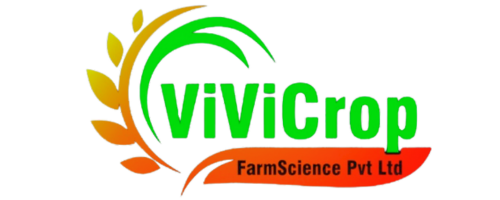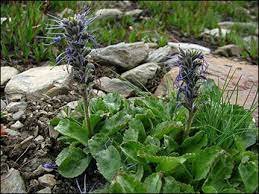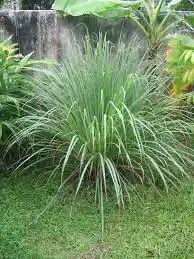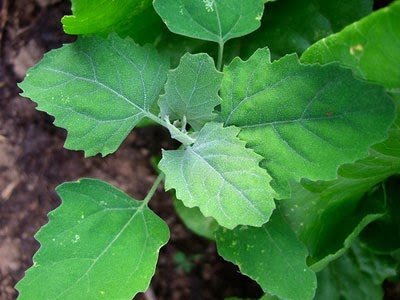Ixora Nutrition Requirements
Nutrition required by Ixora at each stage of its life cycle.
SOIL PREPARATION
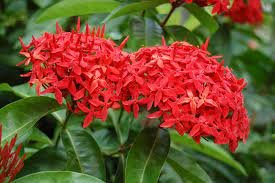
Soil Preparation
Soil preparation is crucial for establishing healthy growth in Ixora (Rangan) plants.
Here's a method for soil preparation and the nutrition requirements at the soil preparation stage:
### Soil Preparation Method:
1. **Site Selection**:
- Choose a planting location that receives partial to full sunlight, as Ixora thrives in bright, indirect light.
- Ensure the site has well-draining soil to prevent waterlogging, as Ixora prefers moist but not waterlogged conditions.
2. **Soil Testing**:
- Conduct a soil test to determine the pH and nutrient levels of the soil.
- Ixora prefers slightly acidic to neutral soil with a pH range of 6.0 to 7.0.
3. **Soil Amendment**:
- If the soil pH is too high or too low, amend the soil accordingly to achieve the optimal pH range for Ixora.
- Incorporate organic matter such as compost, well-rotted manure, or peat moss into the soil to improve its structure, moisture retention, and nutrient content.
4. **Tilling**:
- Till the soil to a depth of about 12 to 18 inches (30 to 45 cm) to loosen compacted soil and improve aeration.
- Remove any rocks, debris, or weeds from the planting area during tilling.
5. **Mulching**:
- Apply a layer of organic mulch, such as wood chips or shredded leaves, around the base of the plants after planting.
- Mulch helps retain soil moisture, suppresses weed growth, and adds organic matter to the soil as it decomposes.
### Nutrition Requirement:
Ixora plants have specific nutritional requirements to support healthy growth and blooming. Here are the key nutrients needed during the soil preparation stage:
1. **Nitrogen (N)**:
- Nitrogen is essential for promoting healthy foliage growth and overall plant vigor.
- Incorporate a balanced fertilizer with a higher nitrogen content to support initial growth and establishment of Ixora plants.
2. **Phosphorus (P)**:
- Phosphorus is crucial for root development, flowering, and overall plant health.
- Choose a fertilizer with a balanced NPK ratio that includes phosphorus to support root establishment and blooming in Ixora.
3. **Potassium (K)**:
- Potassium contributes to overall plant health, stress tolerance, and flower development.
- Select a fertilizer with a balanced NPK ratio that includes potassium to promote healthy blooming and enhance plant resilience.
4. **Micronutrients**:
- Micronutrients such as iron, manganese, zinc, and copper are essential for various biochemical processes in Ixora plants.
- Consider using a fertilizer formulated with micronutrients or applying micronutrient supplements as needed to prevent deficiencies.
5. **pH Balance**:
- Maintain the soil pH within the optimal range (slightly acidic to neutral, pH 6.0 to 7.0) to ensure proper nutrient availability to the plants.
- Adjust soil pH as necessary during the soil preparation stage to create an ideal growing environment for Ixora.
By following this soil preparation method and providing the necessary nutrition requirements, you can create an optimal growing environment for Ixora plants, promoting healthy growth and vibrant blooming. Regular monitoring of soil conditions and plant health will help ensure the ongoing success of your Ixora garden.
Early Growth (Germination to Establishment)

Early Growth
During the early growth stage, from germination to establishment, Ixora plants have specific nutritional requirements to support vigorous root development and initial growth.
Here are the key nutrients needed during this stage:
1. **Nitrogen (N)**:
- Nitrogen is essential for promoting early leaf and stem growth in Ixora plants.
- Provide a balanced fertilizer with a higher nitrogen content to support vigorous vegetative growth during the early stages.
2. **Phosphorus (P)**:
- Phosphorus is crucial for root development and overall plant vigor.
- Ensure an adequate supply of phosphorus to support healthy root establishment and early growth in Ixora plants.
3. **Potassium (K)**:
- Potassium contributes to overall plant health, stress tolerance, and disease resistance.
- Provide a balanced fertilizer with potassium to promote strong stem and leaf development and enhance plant resilience during the early growth stage.
4. **Micronutrients**:
- Micronutrients such as iron, manganese, zinc, and copper are essential for various biochemical processes in Ixora plants.
- Ensure a balanced supply of micronutrients to support early growth and prevent nutrient deficiencies that could hinder plant development.
5. **Calcium (Ca)**:
- Calcium plays a role in cell wall formation and overall plant structure.
- Provide an adequate supply of calcium to support cell elongation and strengthen plant tissues during the early growth stage of Ixora plants.
6. **Magnesium (Mg)**:
- Magnesium is essential for chlorophyll production and overall plant energy metabolism.
- Ensure a balanced supply of magnesium to support healthy leaf development and photosynthesis in Ixora plants during the early growth stage.
7. **pH Balance**:
- Maintain the soil pH within the optimal range (slightly acidic to neutral, pH 6.0 to 7.0) to ensure proper nutrient availability to the plants during the early growth stage.
- Adjust soil pH as necessary to create an ideal growing environment for Ixora plants during the establishment phase.
By providing the right balance of nutrients during the early growth stage, you can promote vigorous root development, strong stem and leaf growth, and overall plant vigor in Ixora plants, setting the foundation for healthy growth and blooming in the future. Regular monitoring of plant growth and soil conditions, along with appropriate fertilization practices, will help ensure optimal nutrition for Ixora during this critical stage of development.
Tillering Stage (Shoot Development)

Tillering Stage
The tillering stage, also known as shoot development, is a critical phase in the growth of Ixora plants. During this stage, the plant focuses on the development of shoots and foliage, preparing for flowering and blooming.
Here are the key nutrition requirements for Ixora plants during the tillering stage:
1. **Nitrogen (N)**:
- Nitrogen is essential for promoting vigorous shoot growth and lush foliage in Ixora plants during the tillering stage.
- Provide a balanced fertilizer with a higher nitrogen content to support healthy vegetative growth and lush foliage development.
2. **Phosphorus (P)**:
- Phosphorus plays a crucial role in root development, stem strength, and overall plant vigor.
- Ensure an adequate supply of phosphorus to support strong shoot development and enhance plant resilience during the tillering stage.
3. **Potassium (K)**:
- Potassium contributes to overall plant health, stress tolerance, and disease resistance.
- Provide a balanced fertilizer with potassium to promote robust shoot development and enhance plant resilience during the tillering stage.
4. **Micronutrients**:
- Micronutrients such as iron, manganese, zinc, and copper are essential for various biochemical processes in Ixora plants.
- Ensure a balanced supply of micronutrients to support healthy shoot development, prevent nutrient deficiencies, and maintain overall plant vigor during the tillering stage.
5. **Calcium (Ca)**:
- Calcium plays a role in cell wall formation and overall plant structure.
- Provide an adequate supply of calcium to support cell elongation and strengthen shoot tissues during the tillering stage of Ixora plants.
6. **Magnesium (Mg)**:
- Magnesium is essential for chlorophyll production and overall plant energy metabolism.
- Ensure a balanced supply of magnesium to support healthy leaf development, photosynthesis, and energy production during the tillering stage of Ixora plants.
7. **pH Balance**:
- Maintain the soil pH within the optimal range (slightly acidic to neutral, pH 6.0 to 7.0) to ensure proper nutrient availability to the plants during the tillering stage.
- Adjust soil pH as necessary to create an ideal growing environment for Ixora plants during shoot development.
By providing the right balance of nutrients during the tillering stage, you can promote vigorous shoot development, lush foliage growth, and overall plant vigor in Ixora plants, setting the stage for healthy flowering and blooming in the future. Regular monitoring of plant growth and soil conditions, along with appropriate fertilization practices, will help ensure optimal nutrition for Ixora during this critical stage of development.
Flowering

Flowering
During the flowering stage, Ixora plants have specific nutritional requirements to support healthy flower development, vibrant colors, and overall plant vigor.
Here are the key nutrition requirements for Ixora plants during the flowering stage:
1. **Phosphorus (P)**:
- Phosphorus is crucial for flower formation, blooming, and overall plant vigor.
- Provide a balanced fertilizer with a higher phosphorus content to promote abundant and vibrant flower production in Ixora plants during the flowering stage.
2. **Potassium (K)**:
- Potassium contributes to flower color, size, and overall plant health during the flowering stage.
- Provide a balanced fertilizer with potassium to support strong flower development, enhance flower color intensity, and improve plant resilience during the flowering stage.
3. **Magnesium (Mg)**:
- Magnesium is essential for chlorophyll production and overall plant energy metabolism, which is crucial for flower development and blooming.
- Ensure an adequate supply of magnesium to support healthy flower development, vibrant colors, and overall plant vigor during the flowering stage of Ixora plants.
4. **Calcium (Ca)**:
- Calcium plays a role in cell wall formation and overall plant structure, contributing to flower development and quality.
- Provide an adequate supply of calcium to support strong flower stems, prevent flower deformation, and maintain overall plant health during the flowering stage.
5. **Sulfur (S)**:
- Sulfur is essential for the synthesis of certain amino acids and proteins involved in flower development and blooming.
- Ensure a balanced supply of sulfur to support healthy flower development, vibrant colors, and overall plant vigor during the flowering stage of Ixora plants.
6. **Micronutrients**:
- Micronutrients such as iron, manganese, zinc, and copper are essential for various biochemical processes involved in flower development and blooming.
- Ensure a balanced supply of micronutrients to prevent nutrient deficiencies, support healthy flower development, vibrant colors, and overall plant vigor during the flowering stage of Ixora plants.
7. **pH Balance**:
- Maintain the soil pH within the optimal range (slightly acidic to neutral, pH 6.0 to 7.0) to ensure proper nutrient availability to the plants during the flowering stage.
- Adjust soil pH as necessary to create an ideal growing environment for Ixora plants during flowering.
By providing the right balance of nutrients during the flowering stage, you can promote abundant and vibrant flower production, enhance flower color intensity, and maintain overall plant vigor in Ixora plants. Regular monitoring of plant growth and soil conditions, along with appropriate fertilization practices, will help ensure optimal nutrition for Ixora during this critical stage of development.
Matchuration & Ripening

Matchuration & Ripening
Ixora plants do not typically undergo a "maturation and ripening" stage in the same sense as fruit-bearing plants. Instead, they primarily focus on flower development and blooming, followed by the formation of seeds after pollination. Therefore, the nutritional requirements during this phase are primarily geared towards supporting flower development, seed formation, and overall plant vigor.
During the maturation and seed development stage in Ixora plants, the key nutritional requirements include:
1. **Phosphorus (P)**:
- Phosphorus is essential for seed formation and overall plant reproductive health.
- Provide a balanced fertilizer with phosphorus to support healthy seed development and overall plant vigor during this stage.
2. **Potassium (K)**:
- Potassium contributes to overall plant health, stress tolerance, and disease resistance, which are important for seed development and plant resilience.
- Provide a balanced fertilizer with potassium to support strong seed development and enhance plant resilience during this stage.
3. **Calcium (Ca)**:
- Calcium plays a role in cell wall formation and overall plant structure, which is important for seed development and quality.
- Provide an adequate supply of calcium to support strong seed development, prevent seed deformities, and maintain overall plant health during this stage.
4. **Magnesium (Mg)**:
- Magnesium is essential for chlorophyll production and overall plant energy metabolism, which are important for seed development and plant vigor.
- Ensure an adequate supply of magnesium to support healthy seed development, vibrant foliage, and overall plant vigor during this stage.
5. **Sulfur (S)**:
- Sulfur is essential for the synthesis of certain amino acids and proteins involved in seed development and plant growth.
- Provide a balanced supply of sulfur to support healthy seed development and overall plant vigor during this stage.
6. **Micronutrients**:
- Micronutrients such as iron, manganese, zinc, and copper are essential for various biochemical processes involved in seed development and plant growth.
- Ensure a balanced supply of micronutrients to prevent nutrient deficiencies, support healthy seed development, and maintain overall plant vigor during this stage.
7. **pH Balance**:
- Maintain the soil pH within the optimal range (slightly acidic to neutral, pH 6.0 to 7.0) to ensure proper nutrient availability to the plants during this stage.
- Adjust soil pH as necessary to create an ideal growing environment for Ixora plants during seed development and plant maturation.
By providing the right balance of nutrients during the maturation and seed development stage, you can support healthy seed formation, enhance plant vigor, and ensure overall plant health in Ixora plants. Regular monitoring of plant growth and soil conditions, along with appropriate fertilization practices, will help ensure optimal nutrition during this critical stage of development.
Harvesting

Harvesting
Ixora plants are typically grown for their ornamental flowers, and there isn't a specific "harvesting" stage in the same sense as fruit-bearing plants. However, if you are considering harvesting flowers for decorative purposes or propagation, here are some general guidelines for the nutrition requirements and procedures to follow:
### Nutrition Requirements:
1. **Phosphorus (P)**:
- Phosphorus supports flower development and overall plant vigor. Ensure a balanced fertilizer with phosphorus to promote healthy flower production.
2. **Potassium (K)**:
- Potassium enhances flower color, size, and overall plant health. Provide a balanced fertilizer with potassium to support vibrant flowers.
3. **Magnesium (Mg)**:
- Magnesium is essential for chlorophyll production and overall plant energy metabolism. Ensure an adequate supply of magnesium for healthy flower development.
4. **Calcium (Ca)**:
- Calcium contributes to cell wall formation and overall plant structure. Provide calcium to support strong flower stems and prevent flower deformation.
5. **Sulfur (S)**:
- Sulfur is necessary for amino acid synthesis and protein formation, which are important for flower development. Ensure a balanced supply of sulfur for healthy flowers.
6. **Micronutrients**:
- Micronutrients such as iron, manganese, zinc, and copper are essential for various biochemical processes in plants. Ensure a balanced supply of micronutrients to prevent deficiencies and promote healthy flower development.
### Harvesting Procedure:
1. **Selecting Flowers**:
- Choose flowers that are fully open but not yet wilted for harvesting. Avoid harvesting flowers that have started to fade or show signs of decay.
2. **Timing**:
- Harvest flowers early in the morning when they are at their freshest and have the highest moisture content.
3. **Cutting Flowers**:
- Use sharp, clean pruning shears or scissors to cut flowers from the plant. Make clean cuts just above a leaf node or lateral branch to encourage new growth.
4. **Removing Leaves**:
- Remove any foliage or leaves from the stems of harvested flowers to prevent them from wilting prematurely and to improve the overall appearance of the bouquet.
5. **Watering**:
- Place harvested flowers in a container of clean, lukewarm water immediately after cutting to keep them hydrated and fresh.
6. **Storage**:
- Store harvested flowers in a cool, shaded area away from direct sunlight and drafts. Change the water every day to keep it fresh and prevent bacterial growth.
By following these nutrition requirements and harvesting procedures, you can ensure that your harvested Ixora flowers remain fresh, vibrant, and long-lasting for use in floral arrangements or propagation purposes.
Ixora Farming Economics
Get details of Profitability and cost estimate in growing Ixora per acres of Land.
SOIL PREPARATION

Soil Preparation
Soil preparation is a crucial step in wheat cultivation, as it directly affects the crop's growth and yield. Here are the soil preparation methods and nutrition requirements at the soil preparation stage for wheat:
Soil Preparation Method:
Land Preparation: Plow the field to break the soil and turn it over. Use a disc harrow or cultivator to further break down clods and level the soil. Ensure proper seedbed preparation by creating a fine, well-tilled soil surface.
Seedbed Preparation: Level the field to provide a uniform surface for planting. Use a roller or a harrow to firm up the soil to facilitate seed-to-soil contact. Remove any weeds or crop residues from the previous season to reduce competition with the wheat crop.
Seed Rate and Sowing: Determine the appropriate seed rate based on the variety and local recommendations. Use a suitable seed drill for uniform and precise sowing. Ensure proper seed depth according to recommended guidelines.
Fertilization: Apply a balanced fertilizer based on soil nutrient analysis and regional recommendations. Incorporate fertilizers into the soil during seedbed preparation. Consider applying phosphorus and potassium along with nitrogen for optimal wheat growth.
Organic Matter: Incorporate well-rotted organic matter, such as compost or manure, into the soil. Organic matter enhances soil structure, water retention, and nutrient availability.
pH Adjustment: Check and adjust soil pH to the recommended range for wheat cultivation (typically around 6.0 to 7.5). Lime may be added to raise pH, and sulfur may be added to lower pH as needed.
Nutrition Requirement at Soil Preparation Stage: Nitrogen (N): Nitrogen is essential for vegetative growth and is crucial during the early stages of wheat development. Apply nitrogen fertilizer during soil preparation to provide an initial boost to the crop.
Phosphorus (P): Phosphorus is vital for root development and early plant establishment. Apply phosphorus-containing fertilizers, such as diammonium phosphate (DAP), during soil preparation.
Potassium (K): Potassium supports overall plant health, disease resistance, and drought tolerance. Apply potassium-containing fertilizers, such as potassium chloride (Muriate of Potash), during soil preparation.
Micronutrients: Consider incorporating micronutrients like zinc, copper, and boron based on soil testing results. Micronutrients play essential roles in enzyme activities and overall plant health.
Organic Matter: Organic matter contributes to nutrient availability and improves the soil's water-holding capacity. Ensure a good supply of organic matter through the incorporation of well-decomposed compost or manure.
Soil pH: Adjust soil pH to the recommended range for wheat cultivation to optimize nutrient uptake by the plants.
Microbial Activity: Encourage beneficial microbial activity in the soil by incorporating organic matter. Healthy soil microbial communities contribute to nutrient cycling and availability.
Water Management: Ensure proper drainage to prevent waterlogging, which can negatively impact nutrient uptake. Irrigate if necessary to maintain adequate soil moisture during wheat establishment.
Early Growth (Germination to Establishment)

Early Growth
Soil preparation is a crucial step in wheat cultivation, as it directly affects the crop's growth and yield. Here are the soil preparation methods and nutrition requirements at the soil preparation stage for wheat:
Soil Preparation Method:
Land Preparation: Plow the field to break the soil and turn it over. Use a disc harrow or cultivator to further break down clods and level the soil. Ensure proper seedbed preparation by creating a fine, well-tilled soil surface.
Seedbed Preparation: Level the field to provide a uniform surface for planting. Use a roller or a harrow to firm up the soil to facilitate seed-to-soil contact. Remove any weeds or crop residues from the previous season to reduce competition with the wheat crop.
Seed Rate and Sowing: Determine the appropriate seed rate based on the variety and local recommendations. Use a suitable seed drill for uniform and precise sowing. Ensure proper seed depth according to recommended guidelines.
Fertilization: Apply a balanced fertilizer based on soil nutrient analysis and regional recommendations. Incorporate fertilizers into the soil during seedbed preparation. Consider applying phosphorus and potassium along with nitrogen for optimal wheat growth.
Organic Matter: Incorporate well-rotted organic matter, such as compost or manure, into the soil. Organic matter enhances soil structure, water retention, and nutrient availability.
pH Adjustment: Check and adjust soil pH to the recommended range for wheat cultivation (typically around 6.0 to 7.5). Lime may be added to raise pH, and sulfur may be added to lower pH as needed.
Nutrition Requirement at Soil Preparation Stage: Nitrogen (N): Nitrogen is essential for vegetative growth and is crucial during the early stages of wheat development. Apply nitrogen fertilizer during soil preparation to provide an initial boost to the crop.
Phosphorus (P): Phosphorus is vital for root development and early plant establishment. Apply phosphorus-containing fertilizers, such as diammonium phosphate (DAP), during soil preparation.
Potassium (K): Potassium supports overall plant health, disease resistance, and drought tolerance. Apply potassium-containing fertilizers, such as potassium chloride (Muriate of Potash), during soil preparation.
Micronutrients: Consider incorporating micronutrients like zinc, copper, and boron based on soil testing results. Micronutrients play essential roles in enzyme activities and overall plant health.
Organic Matter: Organic matter contributes to nutrient availability and improves the soil's water-holding capacity. Ensure a good supply of organic matter through the incorporation of well-decomposed compost or manure.
Soil pH: Adjust soil pH to the recommended range for wheat cultivation to optimize nutrient uptake by the plants.
Microbial Activity: Encourage beneficial microbial activity in the soil by incorporating organic matter. Healthy soil microbial communities contribute to nutrient cycling and availability.
Water Management: Ensure proper drainage to prevent waterlogging, which can negatively impact nutrient uptake. Irrigate if necessary to maintain adequate soil moisture during wheat establishment.
Tillering Stage (Shoot Development)

Tillering Stage
Soil preparation is a crucial step in wheat cultivation, as it directly affects the crop's growth and yield. Here are the soil preparation methods and nutrition requirements at the soil preparation stage for wheat:
Soil Preparation Method:
Land Preparation: Plow the field to break the soil and turn it over. Use a disc harrow or cultivator to further break down clods and level the soil. Ensure proper seedbed preparation by creating a fine, well-tilled soil surface.
Seedbed Preparation: Level the field to provide a uniform surface for planting. Use a roller or a harrow to firm up the soil to facilitate seed-to-soil contact. Remove any weeds or crop residues from the previous season to reduce competition with the wheat crop.
Seed Rate and Sowing: Determine the appropriate seed rate based on the variety and local recommendations. Use a suitable seed drill for uniform and precise sowing. Ensure proper seed depth according to recommended guidelines.
Fertilization: Apply a balanced fertilizer based on soil nutrient analysis and regional recommendations. Incorporate fertilizers into the soil during seedbed preparation. Consider applying phosphorus and potassium along with nitrogen for optimal wheat growth.
Organic Matter: Incorporate well-rotted organic matter, such as compost or manure, into the soil. Organic matter enhances soil structure, water retention, and nutrient availability.
pH Adjustment: Check and adjust soil pH to the recommended range for wheat cultivation (typically around 6.0 to 7.5). Lime may be added to raise pH, and sulfur may be added to lower pH as needed.
Nutrition Requirement at Soil Preparation Stage: Nitrogen (N): Nitrogen is essential for vegetative growth and is crucial during the early stages of wheat development. Apply nitrogen fertilizer during soil preparation to provide an initial boost to the crop.
Phosphorus (P): Phosphorus is vital for root development and early plant establishment. Apply phosphorus-containing fertilizers, such as diammonium phosphate (DAP), during soil preparation.
Potassium (K): Potassium supports overall plant health, disease resistance, and drought tolerance. Apply potassium-containing fertilizers, such as potassium chloride (Muriate of Potash), during soil preparation.
Micronutrients: Consider incorporating micronutrients like zinc, copper, and boron based on soil testing results. Micronutrients play essential roles in enzyme activities and overall plant health.
Organic Matter: Organic matter contributes to nutrient availability and improves the soil's water-holding capacity. Ensure a good supply of organic matter through the incorporation of well-decomposed compost or manure.
Soil pH: Adjust soil pH to the recommended range for wheat cultivation to optimize nutrient uptake by the plants.
Microbial Activity: Encourage beneficial microbial activity in the soil by incorporating organic matter. Healthy soil microbial communities contribute to nutrient cycling and availability.
Water Management: Ensure proper drainage to prevent waterlogging, which can negatively impact nutrient uptake. Irrigate if necessary to maintain adequate soil moisture during wheat establishment.
Flowering

Flowering
Soil preparation is a crucial step in wheat cultivation, as it directly affects the crop's growth and yield. Here are the soil preparation methods and nutrition requirements at the soil preparation stage for wheat:
Soil Preparation Method:
Land Preparation: Plow the field to break the soil and turn it over. Use a disc harrow or cultivator to further break down clods and level the soil. Ensure proper seedbed preparation by creating a fine, well-tilled soil surface.
Seedbed Preparation: Level the field to provide a uniform surface for planting. Use a roller or a harrow to firm up the soil to facilitate seed-to-soil contact. Remove any weeds or crop residues from the previous season to reduce competition with the wheat crop.
Seed Rate and Sowing: Determine the appropriate seed rate based on the variety and local recommendations. Use a suitable seed drill for uniform and precise sowing. Ensure proper seed depth according to recommended guidelines.
Fertilization: Apply a balanced fertilizer based on soil nutrient analysis and regional recommendations. Incorporate fertilizers into the soil during seedbed preparation. Consider applying phosphorus and potassium along with nitrogen for optimal wheat growth.
Organic Matter: Incorporate well-rotted organic matter, such as compost or manure, into the soil. Organic matter enhances soil structure, water retention, and nutrient availability.
pH Adjustment: Check and adjust soil pH to the recommended range for wheat cultivation (typically around 6.0 to 7.5). Lime may be added to raise pH, and sulfur may be added to lower pH as needed.
Nutrition Requirement at Soil Preparation Stage: Nitrogen (N): Nitrogen is essential for vegetative growth and is crucial during the early stages of wheat development. Apply nitrogen fertilizer during soil preparation to provide an initial boost to the crop.
Phosphorus (P): Phosphorus is vital for root development and early plant establishment. Apply phosphorus-containing fertilizers, such as diammonium phosphate (DAP), during soil preparation.
Potassium (K): Potassium supports overall plant health, disease resistance, and drought tolerance. Apply potassium-containing fertilizers, such as potassium chloride (Muriate of Potash), during soil preparation.
Micronutrients: Consider incorporating micronutrients like zinc, copper, and boron based on soil testing results. Micronutrients play essential roles in enzyme activities and overall plant health.
Organic Matter: Organic matter contributes to nutrient availability and improves the soil's water-holding capacity. Ensure a good supply of organic matter through the incorporation of well-decomposed compost or manure.
Soil pH: Adjust soil pH to the recommended range for wheat cultivation to optimize nutrient uptake by the plants.
Microbial Activity: Encourage beneficial microbial activity in the soil by incorporating organic matter. Healthy soil microbial communities contribute to nutrient cycling and availability.
Water Management: Ensure proper drainage to prevent waterlogging, which can negatively impact nutrient uptake. Irrigate if necessary to maintain adequate soil moisture during wheat establishment.
Matchuration & Ripening

Matchuration & Ripening
Soil preparation is a crucial step in wheat cultivation, as it directly affects the crop's growth and yield. Here are the soil preparation methods and nutrition requirements at the soil preparation stage for wheat:
Soil Preparation Method:
Land Preparation: Plow the field to break the soil and turn it over. Use a disc harrow or cultivator to further break down clods and level the soil. Ensure proper seedbed preparation by creating a fine, well-tilled soil surface.
Seedbed Preparation: Level the field to provide a uniform surface for planting. Use a roller or a harrow to firm up the soil to facilitate seed-to-soil contact. Remove any weeds or crop residues from the previous season to reduce competition with the wheat crop.
Seed Rate and Sowing: Determine the appropriate seed rate based on the variety and local recommendations. Use a suitable seed drill for uniform and precise sowing. Ensure proper seed depth according to recommended guidelines.
Fertilization: Apply a balanced fertilizer based on soil nutrient analysis and regional recommendations. Incorporate fertilizers into the soil during seedbed preparation. Consider applying phosphorus and potassium along with nitrogen for optimal wheat growth.
Organic Matter: Incorporate well-rotted organic matter, such as compost or manure, into the soil. Organic matter enhances soil structure, water retention, and nutrient availability.
pH Adjustment: Check and adjust soil pH to the recommended range for wheat cultivation (typically around 6.0 to 7.5). Lime may be added to raise pH, and sulfur may be added to lower pH as needed.
Nutrition Requirement at Soil Preparation Stage: Nitrogen (N): Nitrogen is essential for vegetative growth and is crucial during the early stages of wheat development. Apply nitrogen fertilizer during soil preparation to provide an initial boost to the crop.
Phosphorus (P): Phosphorus is vital for root development and early plant establishment. Apply phosphorus-containing fertilizers, such as diammonium phosphate (DAP), during soil preparation.
Potassium (K): Potassium supports overall plant health, disease resistance, and drought tolerance. Apply potassium-containing fertilizers, such as potassium chloride (Muriate of Potash), during soil preparation.
Micronutrients: Consider incorporating micronutrients like zinc, copper, and boron based on soil testing results. Micronutrients play essential roles in enzyme activities and overall plant health.
Organic Matter: Organic matter contributes to nutrient availability and improves the soil's water-holding capacity. Ensure a good supply of organic matter through the incorporation of well-decomposed compost or manure.
Soil pH: Adjust soil pH to the recommended range for wheat cultivation to optimize nutrient uptake by the plants.
Microbial Activity: Encourage beneficial microbial activity in the soil by incorporating organic matter. Healthy soil microbial communities contribute to nutrient cycling and availability.
Water Management: Ensure proper drainage to prevent waterlogging, which can negatively impact nutrient uptake. Irrigate if necessary to maintain adequate soil moisture during wheat establishment.
Harvesting

Harvesting
Soil preparation is a crucial step in wheat cultivation, as it directly affects the crop's growth and yield. Here are the soil preparation methods and nutrition requirements at the soil preparation stage for wheat:
Soil Preparation Method:
Land Preparation: Plow the field to break the soil and turn it over. Use a disc harrow or cultivator to further break down clods and level the soil. Ensure proper seedbed preparation by creating a fine, well-tilled soil surface.
Seedbed Preparation: Level the field to provide a uniform surface for planting. Use a roller or a harrow to firm up the soil to facilitate seed-to-soil contact. Remove any weeds or crop residues from the previous season to reduce competition with the wheat crop.
Seed Rate and Sowing: Determine the appropriate seed rate based on the variety and local recommendations. Use a suitable seed drill for uniform and precise sowing. Ensure proper seed depth according to recommended guidelines.
Fertilization: Apply a balanced fertilizer based on soil nutrient analysis and regional recommendations. Incorporate fertilizers into the soil during seedbed preparation. Consider applying phosphorus and potassium along with nitrogen for optimal wheat growth.
Organic Matter: Incorporate well-rotted organic matter, such as compost or manure, into the soil. Organic matter enhances soil structure, water retention, and nutrient availability.
pH Adjustment: Check and adjust soil pH to the recommended range for wheat cultivation (typically around 6.0 to 7.5). Lime may be added to raise pH, and sulfur may be added to lower pH as needed.
Nutrition Requirement at Soil Preparation Stage: Nitrogen (N): Nitrogen is essential for vegetative growth and is crucial during the early stages of wheat development. Apply nitrogen fertilizer during soil preparation to provide an initial boost to the crop.
Phosphorus (P): Phosphorus is vital for root development and early plant establishment. Apply phosphorus-containing fertilizers, such as diammonium phosphate (DAP), during soil preparation.
Potassium (K): Potassium supports overall plant health, disease resistance, and drought tolerance. Apply potassium-containing fertilizers, such as potassium chloride (Muriate of Potash), during soil preparation.
Micronutrients: Consider incorporating micronutrients like zinc, copper, and boron based on soil testing results. Micronutrients play essential roles in enzyme activities and overall plant health.
Organic Matter: Organic matter contributes to nutrient availability and improves the soil's water-holding capacity. Ensure a good supply of organic matter through the incorporation of well-decomposed compost or manure.
Soil pH: Adjust soil pH to the recommended range for wheat cultivation to optimize nutrient uptake by the plants.
Microbial Activity: Encourage beneficial microbial activity in the soil by incorporating organic matter. Healthy soil microbial communities contribute to nutrient cycling and availability.
Water Management: Ensure proper drainage to prevent waterlogging, which can negatively impact nutrient uptake. Irrigate if necessary to maintain adequate soil moisture during wheat establishment.
Ixora Disease Details
Nutrition required by Ixora at each stage of its life cycle.
SOIL PREPARATION

Soil Preparation
During the soil preparation stage for Ixora flowers, several diseases and pests can affect the plants.
Here are some common issues and precautions to prevent them:
1. **Soil-Borne Diseases**:
- Soil-borne pathogens like fungi, bacteria, and nematodes can cause diseases such as root rot, damping-off, and wilt.
- **Precautions**:
- Start with well-draining soil to prevent waterlogging, which can promote the growth of soil-borne pathogens.
- Solarize the soil by covering it with clear plastic for several weeks before planting to reduce soil pathogens.
- Rotate crops regularly to prevent the buildup of soil-borne diseases.
2. **Weeds**:
- Weeds compete with Ixora plants for nutrients, water, and sunlight, and they can also harbor pests and diseases.
- **Precautions**:
- Remove existing weeds from the planting area before preparing the soil.
- Use mulch to suppress weed growth and conserve soil moisture.
- Apply pre-emergent herbicides or use manual weeding to control weed growth.
3. **Nematodes**:
- Nematodes are microscopic roundworms that can damage Ixora roots, leading to stunted growth and poor plant vigor.
- **Precautions**:
- Choose nematode-resistant varieties of Ixora if available.
- Practice crop rotation and avoid planting Ixora in areas with a history of nematode infestation.
- Use soil solarization or apply organic soil amendments like neem cake to suppress nematode populations.
4. **Pests**:
- Pests such as aphids, scales, and spider mites can infest Ixora plants, causing damage to leaves, flowers, and stems.
- **Precautions**:
- Inspect plants regularly for signs of pest infestation.
- Use insecticidal soap, neem oil, or horticultural oil to control pests, following label instructions.
- Introduce natural predators like ladybugs to help manage pest populations.
5. **Nutrient Deficiencies**:
- Improper soil preparation can lead to nutrient deficiencies, affecting the overall health and growth of Ixora plants.
- **Precautions**:
- Conduct a soil test before planting to determine nutrient levels and pH.
- Amend the soil with organic matter and appropriate fertilizers based on soil test results to correct any nutrient deficiencies.
- Maintain proper soil pH to ensure optimal nutrient availability for Ixora plants.
By implementing these precautions during the soil preparation stage, you can minimize the risk of diseases and pests affecting Ixora flowers, ensuring healthy growth and vibrant blooms. Regular monitoring of plants and soil conditions, along with appropriate cultural practices, will help maintain the overall health and vigor of Ixora plants throughout their growth cycle.
Early Growth (Germination to Establishment)

Early Growing
During the early growth stage of Ixora flowers, several diseases and pests can affect the plants.
Here are some common issues and precautions to prevent them:
1. **Damping-off**:
- Damping-off is a fungal disease that affects seedlings, causing them to wilt and collapse at the soil level.
- **Precautions**:
- Start with clean, sterile soil and containers for germinating seeds to prevent fungal contamination.
- Ensure proper drainage to avoid waterlogged soil, which promotes fungal growth.
- Avoid overcrowding seedlings and provide adequate spacing to improve air circulation.
2. **Root Rot**:
- Root rot is caused by fungal pathogens and occurs when soil is too wet, leading to root decay and stunted growth.
- **Precautions**:
- Use well-draining soil and avoid overwatering to prevent waterlogging and fungal growth.
- Allow the soil to dry out slightly between waterings to promote healthy root development.
- Remove and discard infected plants to prevent the spread of root rot.
3. **Aphids**:
- Aphids are common pests that feed on plant sap, causing distorted growth and yellowing of leaves.
- **Precautions**:
- Monitor plants regularly for aphid infestations.
- Use insecticidal soap or neem oil to control aphids, following label instructions.
- Introduce natural predators like ladybugs to help manage aphid populations.
4. **Thrips**:
- Thrips are tiny insects that feed on flower buds, causing them to become distorted and discolored.
- **Precautions**:
- Inspect plants regularly for thrips and remove infested buds.
- Use insecticidal soap or neem oil to control thrips, following label instructions.
- Remove weeds and debris from the planting area to reduce thrips habitat.
5. **Fungal Leaf Spots**:
- Fungal leaf spot diseases cause dark lesions on leaves, leading to defoliation and weakened plants.
- **Precautions**:
- Provide adequate spacing between plants to improve air circulation and reduce humidity levels.
- Water plants at the base to avoid wetting the foliage, which promotes fungal growth.
- Apply fungicides preventively if necessary, following label instructions.
6. **Nutrient Deficiencies**:
- Imbalances or deficiencies in nutrients can lead to poor growth and susceptibility to diseases and pests.
- **Precautions**:
- Conduct a soil test before planting to determine nutrient levels and pH.
- Amend the soil with organic matter and appropriate fertilizers based on soil test results to correct any nutrient deficiencies.
- Monitor plant growth and adjust fertilizer application as needed to maintain optimal nutrition.
By implementing these precautions during the early growth stage, you can minimize the risk of diseases and pests affecting Ixora flowers, ensuring healthy growth and development from germination to establishment. Regular monitoring of plants and cultural practices, such as proper watering and fertilization, will help maintain the overall health and vigor of Ixora plants during this critical stage.
Tillering Stage (Shoot Development)

Tillering Stage
During the tillering stage, also known as shoot development, of Ixora flowers, several diseases and pests can affect the plants.
Here are some common issues and precautions to prevent them:
1. **Powdery Mildew**:
- Powdery mildew is a fungal disease that appears as a white powdery substance on leaves, stems, and flowers, leading to distorted growth and reduced plant vigor.
- **Precautions**:
- Ensure proper air circulation by spacing plants adequately.
- Avoid overhead watering to reduce humidity levels around the plants.
- Apply fungicides preventively, especially during periods of high humidity, following label instructions.
2. **Root Rot**:
- Root rot can occur due to overwatering or poorly draining soil, leading to fungal infections like Phytophthora spp. and Fusarium spp., which affect root health and shoot development.
- **Precautions**:
- Use well-draining soil mix.
- Allow the soil to dry out slightly between waterings.
- Avoid overwatering and ensure proper drainage.
- Apply fungicides preventively if necessary, following label instructions.
3. **Aphids**:
- Aphids are common pests that feed on plant sap, causing distorted growth and yellowing of leaves, affecting shoot development.
- **Precautions**:
- Monitor plants regularly for aphid infestations.
- Use insecticidal soap or neem oil to control aphids, following label instructions.
- Introduce natural predators like ladybugs to help manage aphid populations.
4. **Spider Mites**:
- Spider mites are tiny pests that suck plant juices, causing yellowing leaves and webbing on the undersides of leaves, affecting shoot development.
- **Precautions**:
- Keep plants well-hydrated to prevent spider mite infestations.
- Use a strong stream of water to wash off spider mites from the leaves.
- Apply insecticidal soap or neem oil to control spider mites, following label instructions.
5. **Fungal Leaf Spot**:
- Fungal leaf spot diseases cause dark lesions on leaves, leading to defoliation and weakened plants, affecting overall shoot development.
- **Precautions**:
- Provide adequate spacing between plants to improve air circulation and reduce humidity levels.
- Water plants at the base to avoid wetting the foliage, which promotes fungal growth.
- Apply fungicides preventively if necessary, following label instructions.
By implementing these precautions during the tillering stage, you can minimize the risk of diseases and pests affecting Ixora flowers, ensuring healthy shoot development and overall plant vigor. Regular monitoring of plants and cultural practices, such as proper watering and fertilization, will help maintain the overall health and vigor of Ixora plants during this critical stage.
Flowering

Flowering
During the flowering stage of Ixora plants, several diseases and pests can affect the flowers.
Here are some common issues and precautions to prevent them:
1. **Powdery Mildew**:
- Powdery mildew is a fungal disease that appears as a white powdery substance on leaves, stems, and flowers, leading to distorted growth and reduced flower quality.
- **Precautions**:
- Ensure proper air circulation by spacing plants adequately.
- Avoid overhead watering to reduce humidity levels around the plants.
- Apply fungicides preventively, especially during periods of high humidity, following label instructions.
2. **Anthracnose**:
- Anthracnose is a fungal disease that causes dark, sunken lesions on flowers and leaves, leading to flower blight and premature flower drop.
- **Precautions**:
- Remove and destroy infected plant parts promptly to prevent the spread of the disease.
- Avoid overhead watering and provide proper air circulation to reduce humidity levels.
3. **Bud Rot**:
- Bud rot is a fungal disease that affects flower buds, causing them to rot and turn brown or black, leading to flower blight and reduced flower production.
- **Precautions**:
- Remove and destroy infected flower buds promptly to prevent the spread of the disease.
- Avoid overhead watering and provide proper air circulation to reduce humidity levels.
4. **Aphids**:
- Aphids are common pests that feed on plant sap, causing distorted growth and yellowing of leaves and flowers.
- **Precautions**:
- Monitor plants regularly for aphid infestations, especially on flower buds and young shoots.
- Use insecticidal soap or neem oil to control aphids, following label instructions.
- Introduce natural predators like ladybugs to help manage aphid populations.
5. **Thrips**:
- Thrips are tiny insects that feed on flower buds, causing them to become distorted and discolored.
- **Precautions**:
- Inspect plants regularly for thrips and remove infested buds.
- Use insecticidal soap or neem oil to control thrips, following label instructions.
6. **Fungal Leaf Spot**:
- Fungal leaf spot diseases cause dark lesions on leaves and flowers, leading to defoliation and weakened plants.
- **Precautions**:
- Provide adequate spacing between plants to improve air circulation and reduce humidity levels.
- Water plants at the base to avoid wetting the foliage, which promotes fungal growth.
- Apply fungicides preventively if necessary, following label instructions.
By implementing these precautions during the flowering stage, you can minimize the risk of diseases and pests affecting Ixora flowers, ensuring healthy flower development and vibrant blooms. Regular monitoring of plants and cultural practices, such as proper watering and fertilization, will help maintain the overall health and vigor of Ixora plants during this critical stage.
Matchuration & Ripening

Matchuration & Ripening
During the maturation and ripening stage of Ixora (Rangan) plants, several diseases and pests can occur if proper precautions are not taken.
Here are some common issues and precautions to prevent them:
1. **Anthracnose**:
- Anthracnose is a fungal disease that can affect Ixora plants during maturation and ripening, causing dark lesions on leaves and stems.
- **Precautions**:
- Maintain proper plant spacing and airflow to reduce humidity levels and minimize favorable conditions for fungal growth.
- Apply fungicides containing copper or chlorothalonil preventively to protect against anthracnose.
- Remove and destroy infected plant material to prevent the spread of the disease.
2. **Powdery Mildew**:
- Powdery mildew is a fungal disease that can affect Ixora plants during maturation and ripening, appearing as white powdery growth on leaves and stems.
- **Precautions**:
- Maintain good air circulation by spacing plants adequately and pruning to improve airflow.
- Avoid overhead watering and irrigate at the base of plants to reduce humidity levels.
- Apply fungicides containing sulfur or potassium bicarbonate preventively to protect against powdery mildew.
3. **Root Rot**:
- Root rot diseases, caused by soil-borne pathogens, can affect the roots of Ixora plants during maturation and ripening, leading to wilting and decline.
- **Precautions**:
- Ensure well-drained soil and avoid overwatering to prevent waterlogged conditions.
- Use soil amendments such as perlite or sand to improve soil drainage.
- Apply fungicides or biological controls to soil as a preventive measure against root rot pathogens.
4. **Aphids**:
- Aphids are small sap-sucking insects that can infest the flowers and tender shoots of Ixora plants during maturation and ripening, causing distortion and stunting of growth.
- **Precautions**:
- Monitor plants regularly for aphid infestations and use insecticidal soap or neem oil to control populations.
- Introduce natural predators such as ladybugs or lacewings to help manage aphid populations.
5. **Thrips**:
- Thrips are tiny insects that feed on young leaves and flowers of Ixora plants, causing stippling and distortion of foliage during maturation and ripening.
- **Precautions**:
- Inspect plants regularly for thrips and use insecticidal soap or horticultural oils to control infestations.
- Prune and remove affected plant parts to reduce thrips populations.
By implementing these precautions during the maturation and ripening stage of Ixora plants, you can minimize the risk of diseases and pests affecting plant health and promote healthy growth. Regular monitoring and timely interventions will help address any issues promptly.
Harvesting

Harvesting
During the harvesting stage of Ixora flowers, diseases and pests can still affect the plants, especially if proper precautions are not taken.
Here are some potential issues and precautions to consider:
1. **Botrytis Blight (Gray Mold)**:
- Botrytis cinerea, the fungus responsible for gray mold, can infect harvested flowers, causing them to develop a fuzzy gray mold and eventually rot.
- **Precautions**:
- Handle harvested flowers gently to avoid bruising or damaging them, as injuries can provide entry points for fungal pathogens.
- Store harvested flowers in a cool, dry place with good air circulation to prevent moisture buildup and reduce the risk of fungal growth.
- Discard any flowers showing signs of fungal infection promptly to prevent the spread of the disease to healthy flowers.
2. **Pest Infestations**:
- Pests such as aphids, thrips, and spider mites may continue to infest harvested flowers, causing damage and reducing their quality.
- **Precautions**:
- Inspect harvested flowers for signs of pest infestation before storage or use.
- Use insecticidal soap or neem oil to treat harvested flowers if pest infestations are detected, following label instructions.
- Store harvested flowers in a pest-free environment to minimize the risk of further infestation.
3. **Environmental Stress**:
- Environmental factors such as extreme temperatures, humidity fluctuations, and exposure to direct sunlight can stress harvested flowers, affecting their appearance and longevity.
- **Precautions**:
- Handle harvested flowers carefully to avoid exposing them to extreme temperatures or direct sunlight during transport and storage.
- Store harvested flowers in a cool, shaded area with proper ventilation to maintain their freshness and quality.
- Use protective packaging or containers to shield harvested flowers from environmental stressors during transport and storage.
4. **Post-Harvest Diseases**:
- Certain diseases, such as bacterial soft rot or fungal rots, can develop in harvested flowers if they are not handled and stored properly.
- **Precautions**:
- Use clean, sanitized containers and tools for harvesting and handling flowers to minimize the risk of introducing pathogens.
- Remove any damaged or diseased flowers before storage to prevent the spread of disease to healthy flowers.
- Keep harvested flowers dry and avoid excess moisture during storage to reduce the risk of fungal and bacterial growth.
By implementing these precautions during the harvesting stage, you can help minimize the risk of diseases and pests affecting Ixora flowers, ensuring the quality and longevity of harvested blooms. Regular inspection, proper handling, and appropriate storage techniques are essential to preserving the freshness and beauty of Ixora flowers after harvest.
